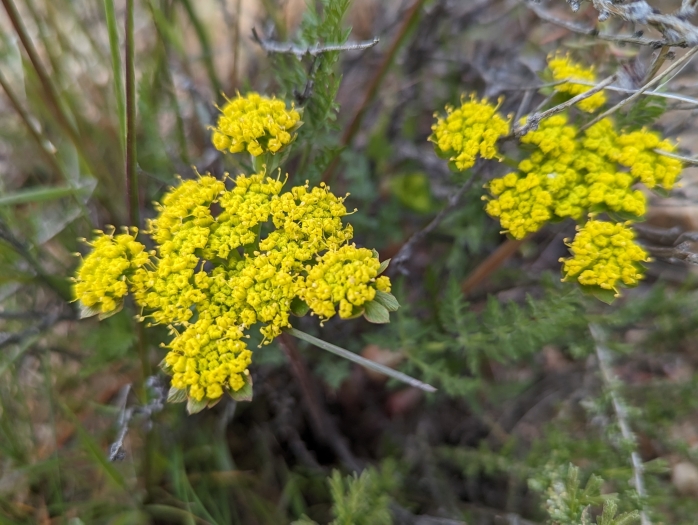Common Lomatium
(Lomatium utriculatum)
Common Lomatium (Lomatium utriculatum)
/
/

© Nicholas Wei
CC BY-SA 4.0
























Estimated Native Range
Summary
Common lomatium is valued for its early spring flowers, which can enliven a garden when little else is in bloom. It is drought-tolerant once established, making it suitable for xeriscaping and native plant gardens. It thrives in full sun to part shade and prefers well-drained soils. While it is not commonly used in large-scale cultivation, it can be an excellent addition to rock gardens, borders, and as a ground cover in suitable climates. The plant has a history of use by Native American groups as a food source and for medicinal purposes, particularly for its antiviral properties. Care should be taken when locating common lomatium as it can be sensitive to overwatering and may suffer from root rot in poorly drained soils.CC BY-SA 4.0
Plant Description
- Plant Type: Herb
- Height: 0.5-1 feet
- Width: 0.5-1 feet
- Growth Rate: Moderate
- Flower Color: N/A
- Flowering Season: Spring
- Leaf Retention: Evergreen
Growth Requirements
- Sun: Full Sun, Part Shade
- Water: Low, Medium
- Drainage: Fast, Medium, Slow
Common Uses
Bee Garden, Butterfly Garden, Drought Tolerant, Edible*Disclaimer: Easyscape's listed plant edibility is for informational use. Always verify the safety and proper identification of any plant before consumption., Low Maintenance
Natural Habitat
native to a variety of habitats in the Pacific Northwest, from British Columbia to California, including open woodlands, grasslands, and coastal bluffs
Other Names
Common Names: Bladder-Parsnip, Spring Gold, Fine-Leaf Desert-Parsley, Fine-Leaved Desert-Parsley, Bladder Desert-Parsley, Fine-Leaved Lomatium, Foothill Desert-Parsley
Scientific Names: , Lomatium utriculatum, Cogswellia caruifolia var. patens, Cogswellia caruifolia var. vaseyi, Cogswellia chandleri, Cogswellia utriculata, Cogswellia vaseyi, Cogswellia vaseyi, Lomatium chandleri, Lomatium utriculatum var. anthemifolium
GBIF Accepted Name: